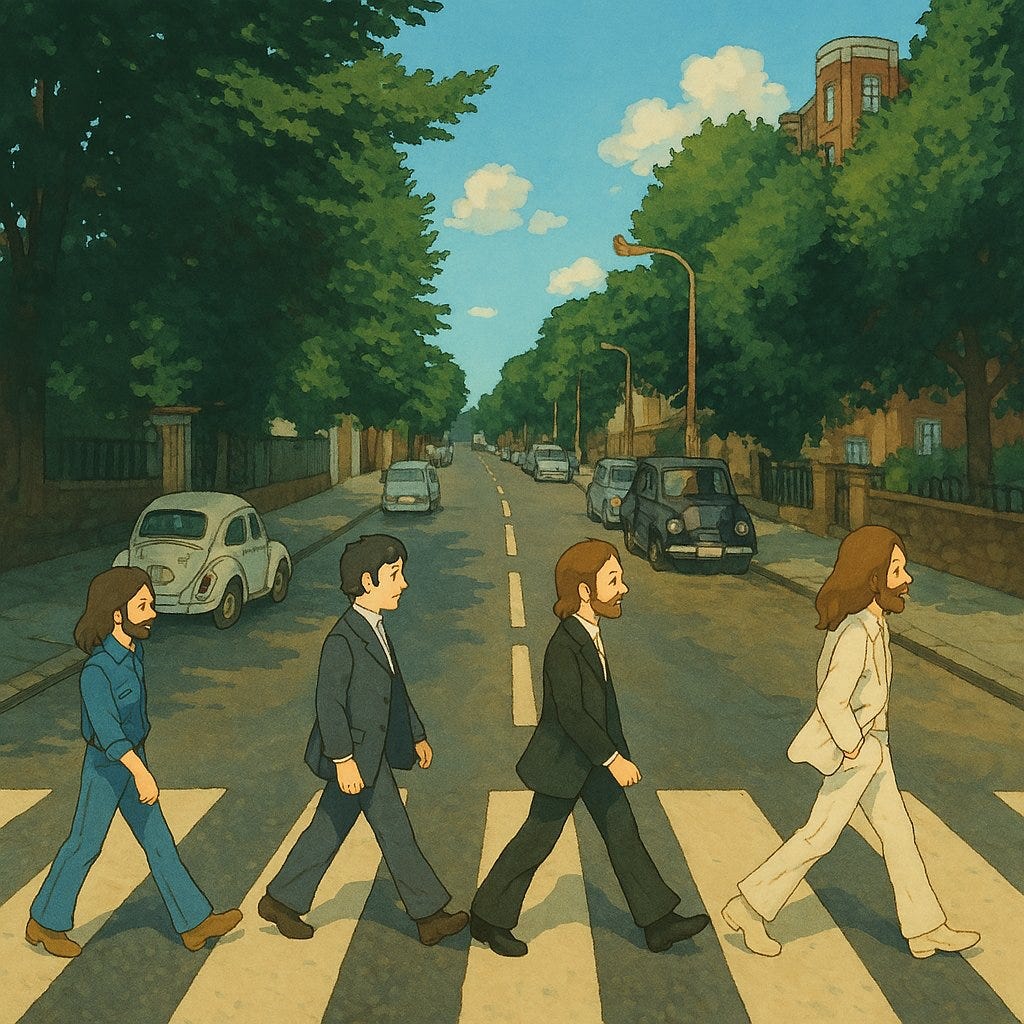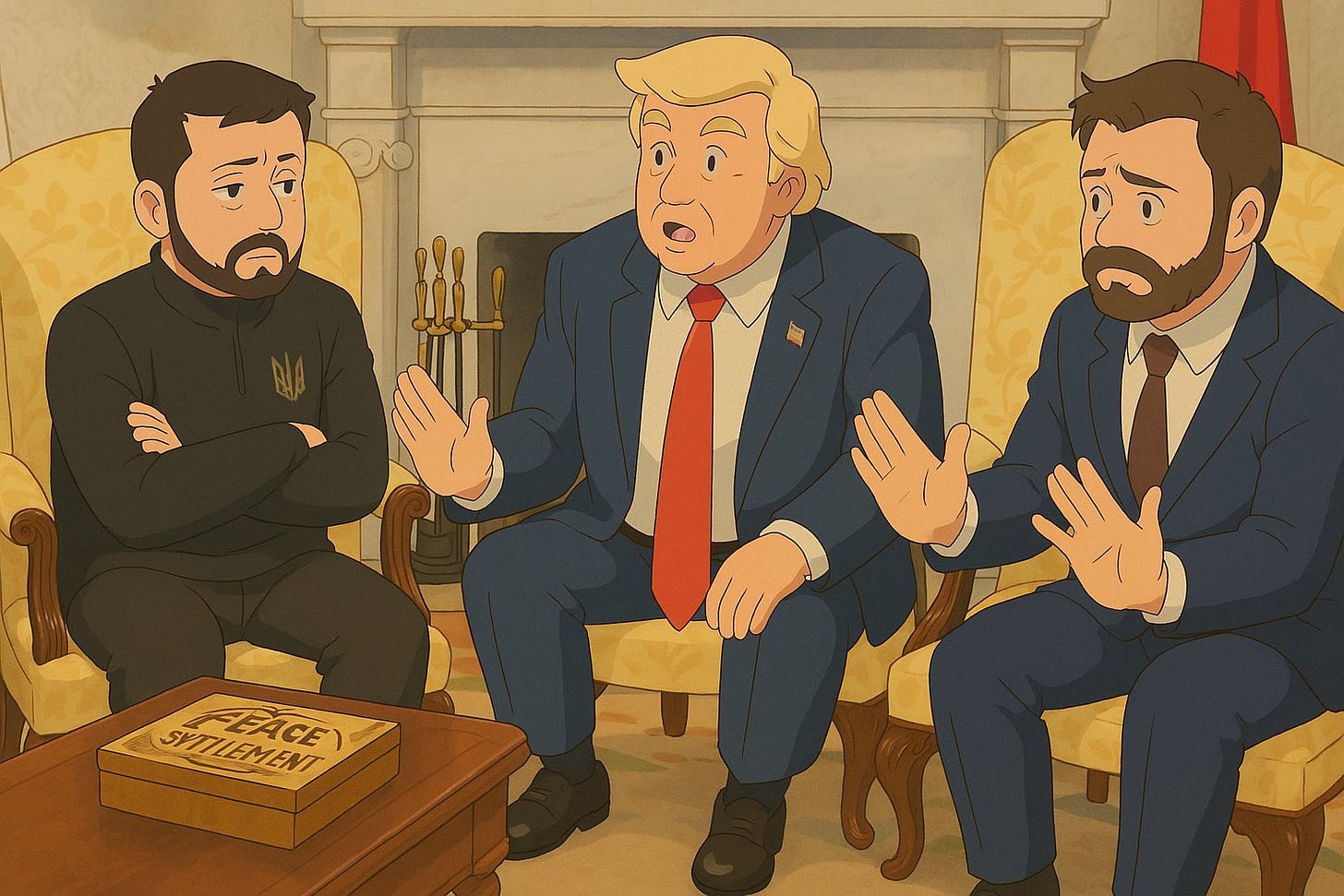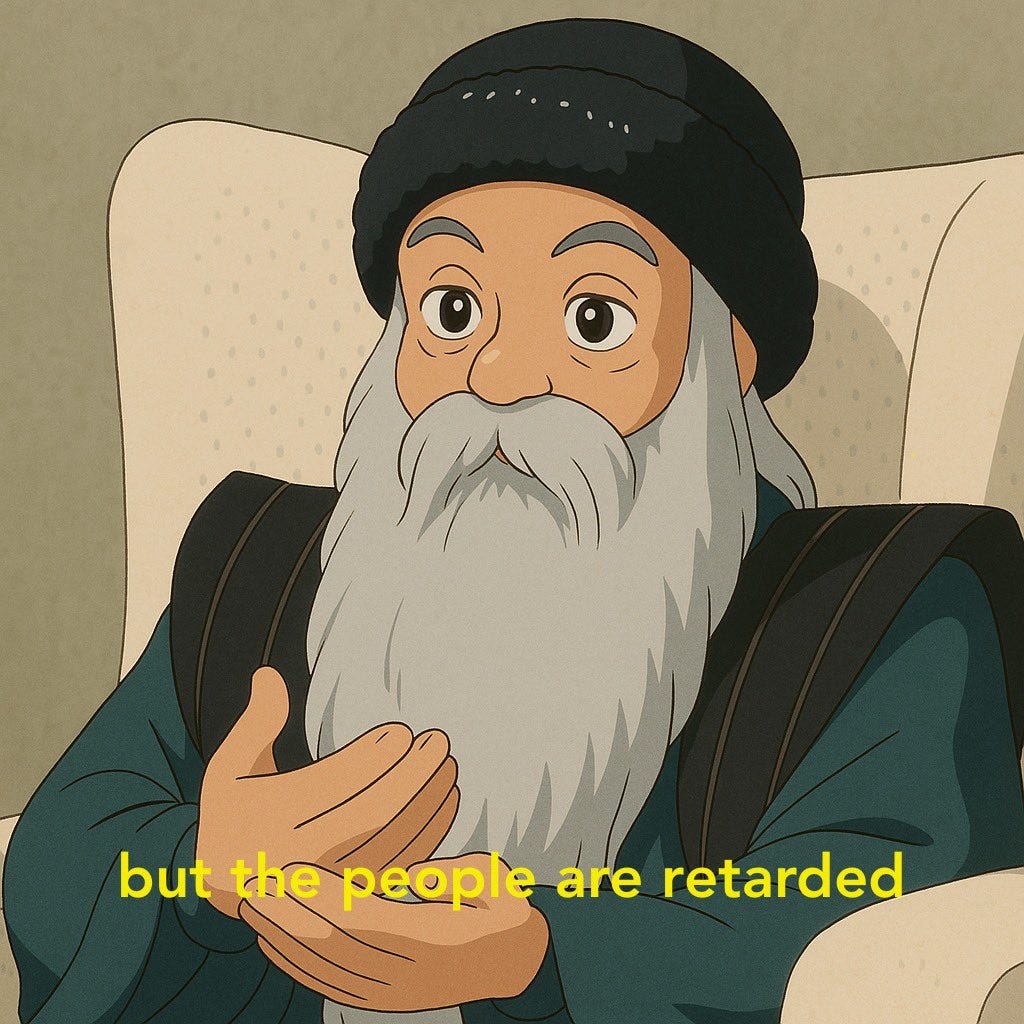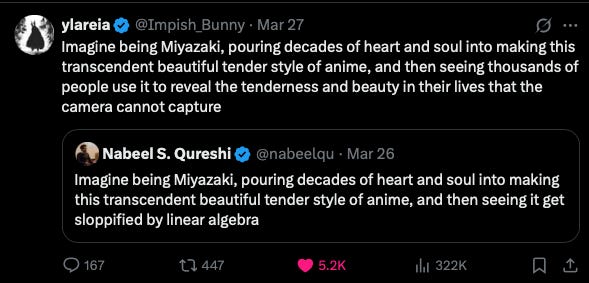In the Internet trends flare up and fade quickly. Every one of those can be ignored as the fleeting things they are, or they can be toyed with like broken pieces of a mirror offering little views into who we are right now.
The obsession sweeping the digital landscape now is powered by ChatGPT’s latest image generation feature. People use it to transform historical and other well-known photos into Studio Ghibli-style art.
Studio Ghibli is a Japanese animation film studio founded in 1985, and globally acclaimed for its beautifully crafted and touching animated films. Now that AI has gobbled up Ghibli’s art as ’training data’, people can upload any photos to AI and watch them bloom into warm, hand-drawn scenes—as good as AI can make.
Studio Ghibli’s style is instantly recognizable: earthy hues and gentle sweeps of hand-drawn lines. Even a windswept field feels alive with quiet magic. It’s a visual language that softens reality’s edges. Why is it so fascinating for people to reimagine history in such light?
History, with its wars and injustices, is overwhelming. Softening it might let us sidestep some of its sharper truths. But if that’s the only thing that AI-ghiblification is about, then it is an injustice towards the original artists who do not shy away from darkness in their work. For example, Grave of the Fireflies (1988) delivers a gut-punch with the story of Seita and Setsuko, two children who die because of war and hunger.
Maybe there is a bid for empathy in the ghiblification of history. Could it be seen as a rejection of the binary lens—hero vs villain, saint vs sinner—that too often frames our view? It’s interesting that a drawing that is inherently less complex than the reality it represents can open up ways to see beyond such simplifications. Doesn’t that imply that we weren’t looking at reality in the first place?
It’s understandable to be tired of division. Rendering historical figures more relatable bridges the gap between then and now, making the past feel less like a lecture and more like a conversation. It’s a quiet rebellion against cynicism (like hopepunk I wrote about earlier), a whisper that even in the deepest shadows of history, there were… humans. And only humans.
The artists of Studio Ghibli poured decades into their work, and then arrived in this current moment to witness their art get mechanically repurposed to accommodate any whim using AI. That can be painful. But the way even machine constructed imitations of their art can respond to the craving for understanding—a desire to weave a more compassionate narrative—is a great testament to their work. Maybe there can’t be too much of a good thing?
I’m writing a book on… eh, let’s call it social innovation. This blog expands on it, reflecting on news stories and current events, often heading to surprising directions. Subscribe to stay tuned—it’s free.
By subscribing to my Substack, you’ll get a monthly summary, but you won’t get any spam or separate notifications in email for each post.





